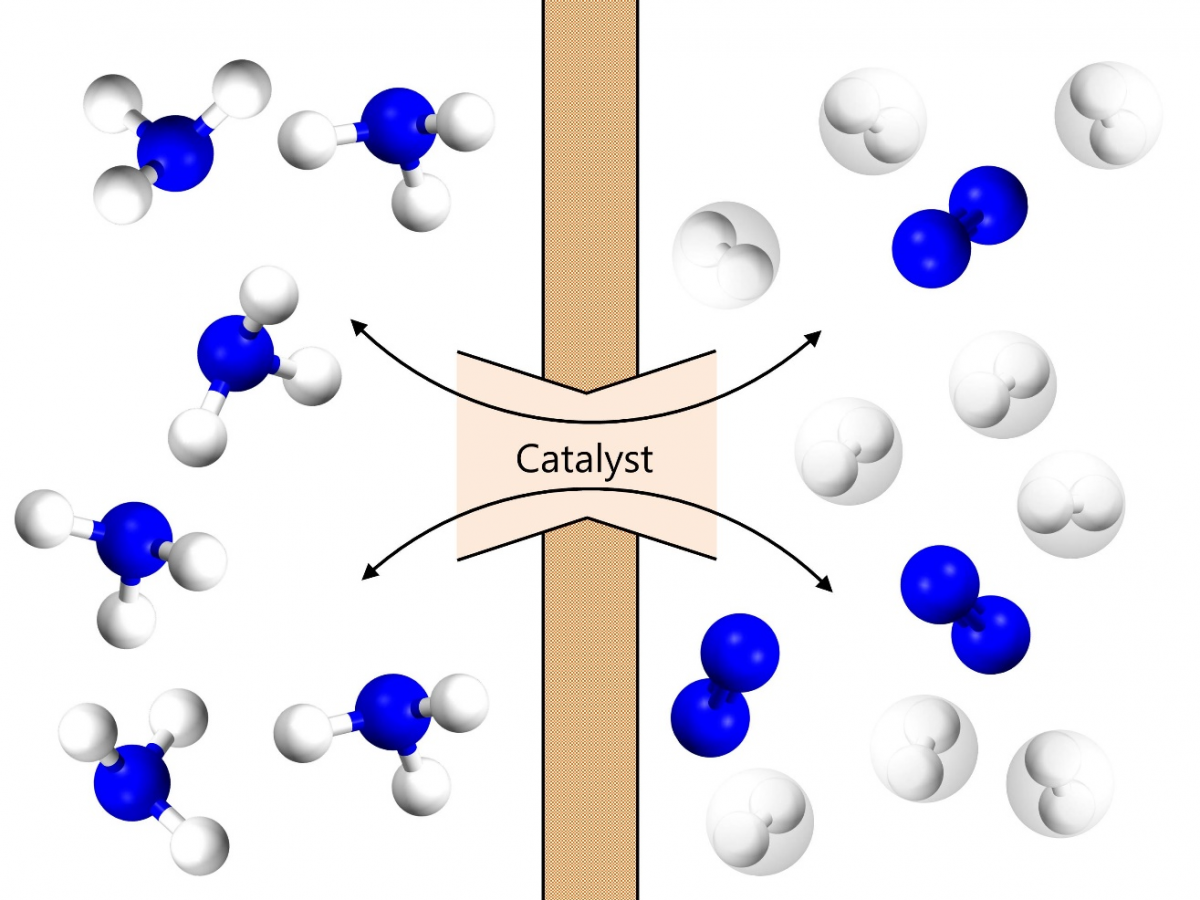Catalysts
Nitrogen is the most abundant molecule in our atmosphere, but one of the least abundant in the earth’s crust. This is because of the high stability of the nitrogen-nitrogen triple bond that keeps the nitrogen molecule (N2) together. As a result of excellent stability, N2 is very difficult to break apart, even in the presence of hydrogen (H2). Without a catalyst, making ammonia (NH3) from N2 and H2 would require very high temperatures and pressures or a highly inefficient route using electrical arc discharges. A catalyst increases the speed of a reaction at a given temperature and current ammonia synthesis catalysts based on iron (Haber-Bosch process) or ruthenium (Kellogg process) do just that. The reverse process, ammonia decomposition, also requires a catalyst to enable the reaction to proceed, because the nitrogen-nitrogen triple bond is difficult to make (although it releases lots of energy when made—which is the energy behind many explosives and one of the reasons why ammonia is a good energy store). Although ammonia decomposition is a much less industrially mature process than ammonia synthesis, current catalysts are similar to the ammonia synthesis catalysts and based on transition metals (viz. ruthenium, nickel, and sometimes iron).
Transition metal catalysts work by N2 and H2 molecules (or NH3 molecules in the case of ammonia decomposition) adsorbing onto the catalyst surface and the reactant and product bonds breaking and forming respectively one-by-one. Generally speaking, it is the strength of nitrogen adsorption (i.e. how well nitrogen bonds to the metal surface) which determines the effectiveness of the catalyst. If it bonds very strongly, then the nitrogen will never be released, but if it bonds too weakly then the nitrogen-nitrogen triple bond will not be formed (or broken). It transpires that ruthenium is the best catalyst for both ammonia synthesis and ammonia decomposition, but unfortunately ruthenium is rare and costly.
In the ARENHA project, the aim is to perform ammonia synthesis and ammonia decomposition via UKRI-STFC’s ammonia decomposition catalyst technology, which only uses abundant elements (i.e. no precious metals). It is known that the reactions proceed via a different mechanism than the one outlined above for transition metals, and that the reaction rates are very rapid. The ability of these catalysts to perform at larger scales, however, is yet to be tested and the ARENHA project will advance this.

